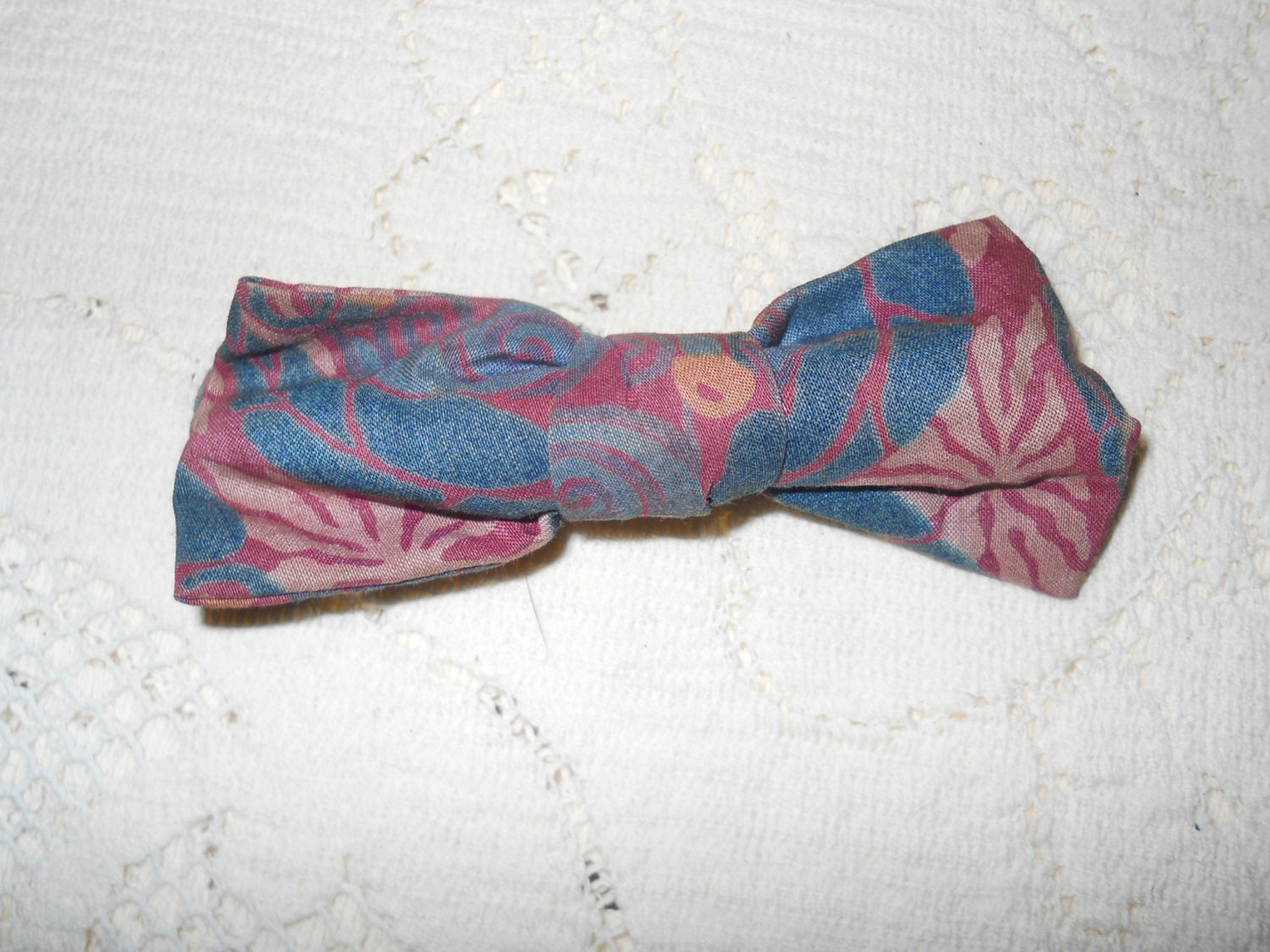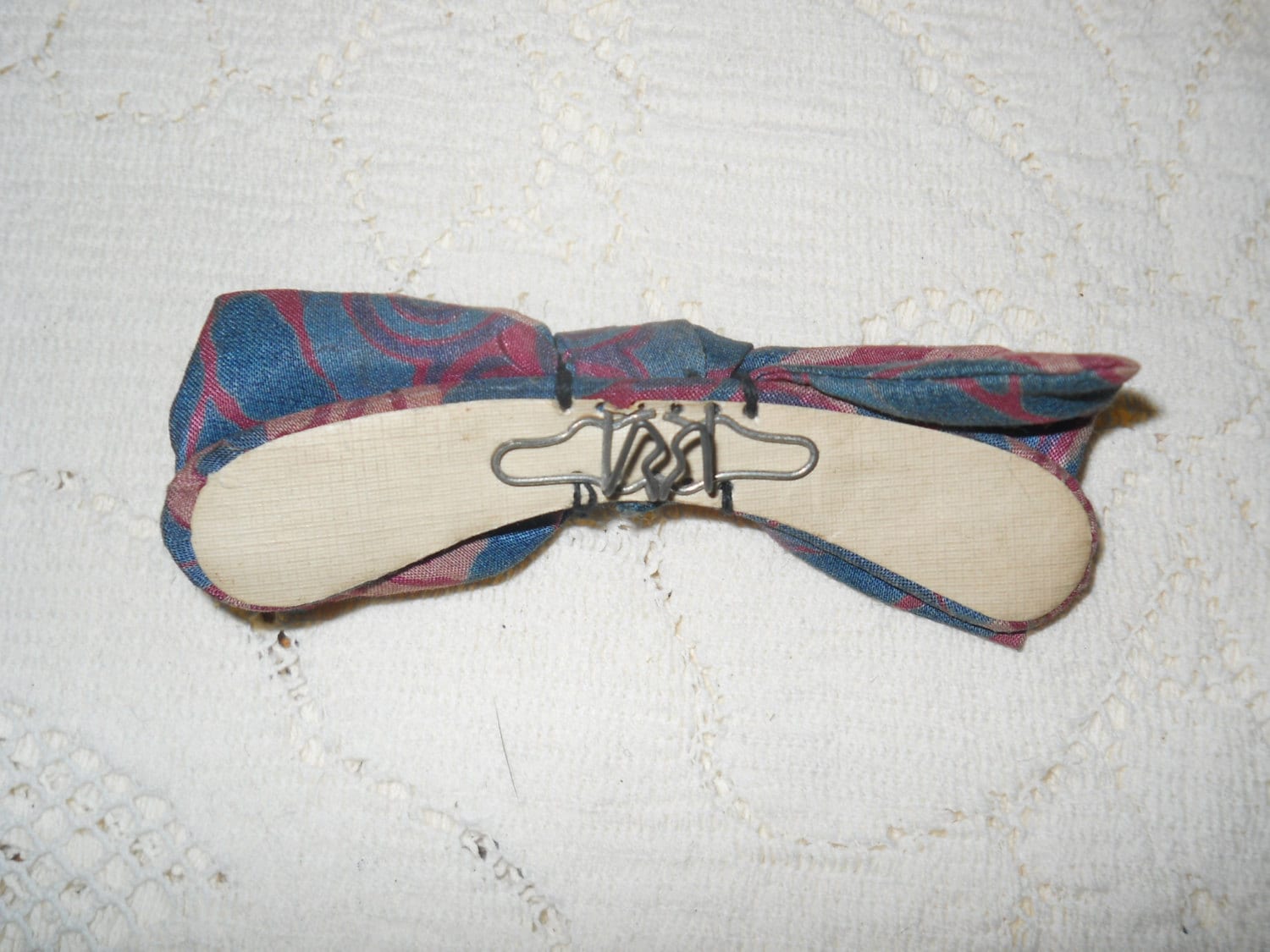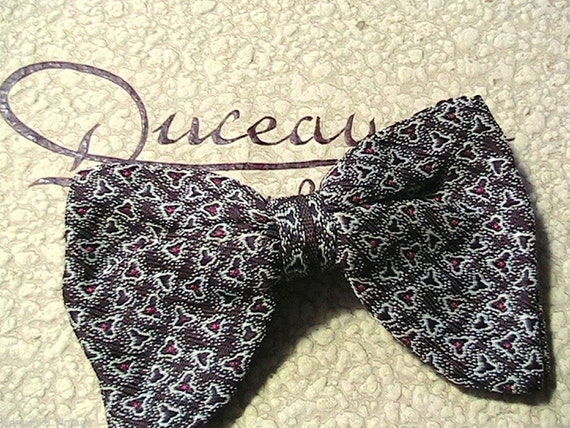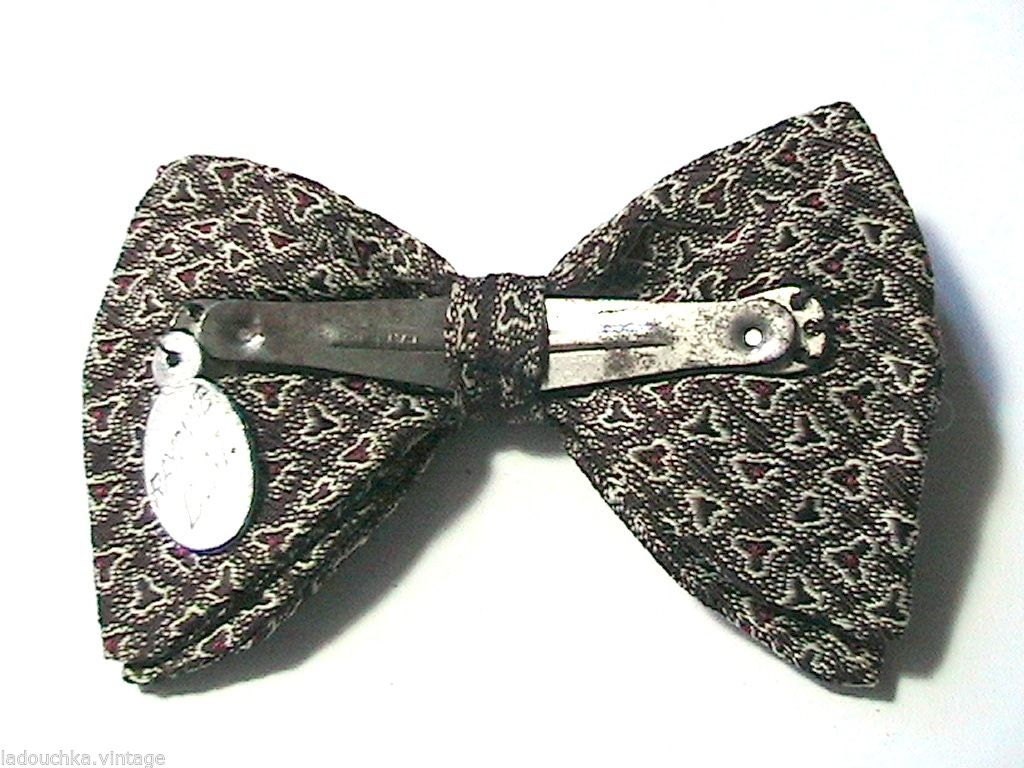Shinobichi
Familiar Face
- Messages
- 73
- Location
- Burnaby BC
First , I apologize in putting this article here, after I finished I forgot I was in classifieds! I tried to remove it to start again but didn't work.
I don't know how to fix this so if anyone can show me I would really appreciate this!
Hi all ...anyone have any info on what evidence to look for in a certain era in a bow tie? In other words how do you know it's a 1920's,30's, 40's 50's, etc. bow tie?
A lot of sellers say a lot of the same things like : " Been selling vintage for 30 years "
However, objectively speaking, this does not make a seller immune to mistakes or does this give them a certificate in being experts in assessing a vintage item.
We know nothing of the sellers skill in assessing an item just know they have experience in selling for 30 years!
Even selling vintage clothing for 30 years doesn't make a person automatically KNOWLEDGEABLE in history of clothing. That takes study. They might not even know a lot or anything at all about vintage clothing.
And EVEN if they have the skill, it's possible that they can make a mistake still if they rely on guess work.
Vice versa, a person might be very knowledgeable about vintage clothing yet have little or no experience in selling, as selling is a different skill altogether.
A seller or collector has to show objective evidence , ie. certain materials used in that era, fonts, companies, styles, etc. or KNOW specifically that it was purchased by a person who lived in that era. ie. grandparents still alive bought the item at that era.
I sold a pair of really nice vintage lamps once, and one of the evidences I used was that the person who originally purchased it was still alive and remembered purchasing it with her husband.
Finding a vintage item with a group of 1920's items doesn't prove that the item is a 1920's item either. It just proves that the item was left with a group of 1920's items.
It's like finding a 2012 made in China reproduction 1920's item with a group of real vintage 1920's items and say " This is from the 1920's because it was found with other truly vintage 1920's items."
How many times have we heard this, " It was in a chest that held other 1920s items."
So, somebody in time and space threw it in there for whatever reason, maybe even thinking it was part of that collection of clothes, but this doesn't make it automatically a true vintage 1920's item!
Walking into a Chinese restaurant doesn't make you Chinese!
Humility, is the best way to handle a situation. There's too much high headedness out there, it's best to just acknowledge:
" In this case, it's hard to tell , bust based on the evidence shown, it is beyond reasonable doubt that this is from the 1920's."
Anyways, all info on how can you tell a bow ties era, will be appreciated!
There is an article on line about how to buy a vintage bow tie published by ebay, but that article didn't say anything at all just a lot of talk on how to wear a bow tie. Should've just named it "How to wear a vintage bow tie".
Thanks all!
I don't know how to fix this so if anyone can show me I would really appreciate this!
Hi all ...anyone have any info on what evidence to look for in a certain era in a bow tie? In other words how do you know it's a 1920's,30's, 40's 50's, etc. bow tie?
A lot of sellers say a lot of the same things like : " Been selling vintage for 30 years "
However, objectively speaking, this does not make a seller immune to mistakes or does this give them a certificate in being experts in assessing a vintage item.
We know nothing of the sellers skill in assessing an item just know they have experience in selling for 30 years!
Even selling vintage clothing for 30 years doesn't make a person automatically KNOWLEDGEABLE in history of clothing. That takes study. They might not even know a lot or anything at all about vintage clothing.
And EVEN if they have the skill, it's possible that they can make a mistake still if they rely on guess work.
Vice versa, a person might be very knowledgeable about vintage clothing yet have little or no experience in selling, as selling is a different skill altogether.
A seller or collector has to show objective evidence , ie. certain materials used in that era, fonts, companies, styles, etc. or KNOW specifically that it was purchased by a person who lived in that era. ie. grandparents still alive bought the item at that era.
I sold a pair of really nice vintage lamps once, and one of the evidences I used was that the person who originally purchased it was still alive and remembered purchasing it with her husband.
Finding a vintage item with a group of 1920's items doesn't prove that the item is a 1920's item either. It just proves that the item was left with a group of 1920's items.
It's like finding a 2012 made in China reproduction 1920's item with a group of real vintage 1920's items and say " This is from the 1920's because it was found with other truly vintage 1920's items."
How many times have we heard this, " It was in a chest that held other 1920s items."
So, somebody in time and space threw it in there for whatever reason, maybe even thinking it was part of that collection of clothes, but this doesn't make it automatically a true vintage 1920's item!
Walking into a Chinese restaurant doesn't make you Chinese!
Humility, is the best way to handle a situation. There's too much high headedness out there, it's best to just acknowledge:
" In this case, it's hard to tell , bust based on the evidence shown, it is beyond reasonable doubt that this is from the 1920's."
Anyways, all info on how can you tell a bow ties era, will be appreciated!
There is an article on line about how to buy a vintage bow tie published by ebay, but that article didn't say anything at all just a lot of talk on how to wear a bow tie. Should've just named it "How to wear a vintage bow tie".
Thanks all!
Last edited:



